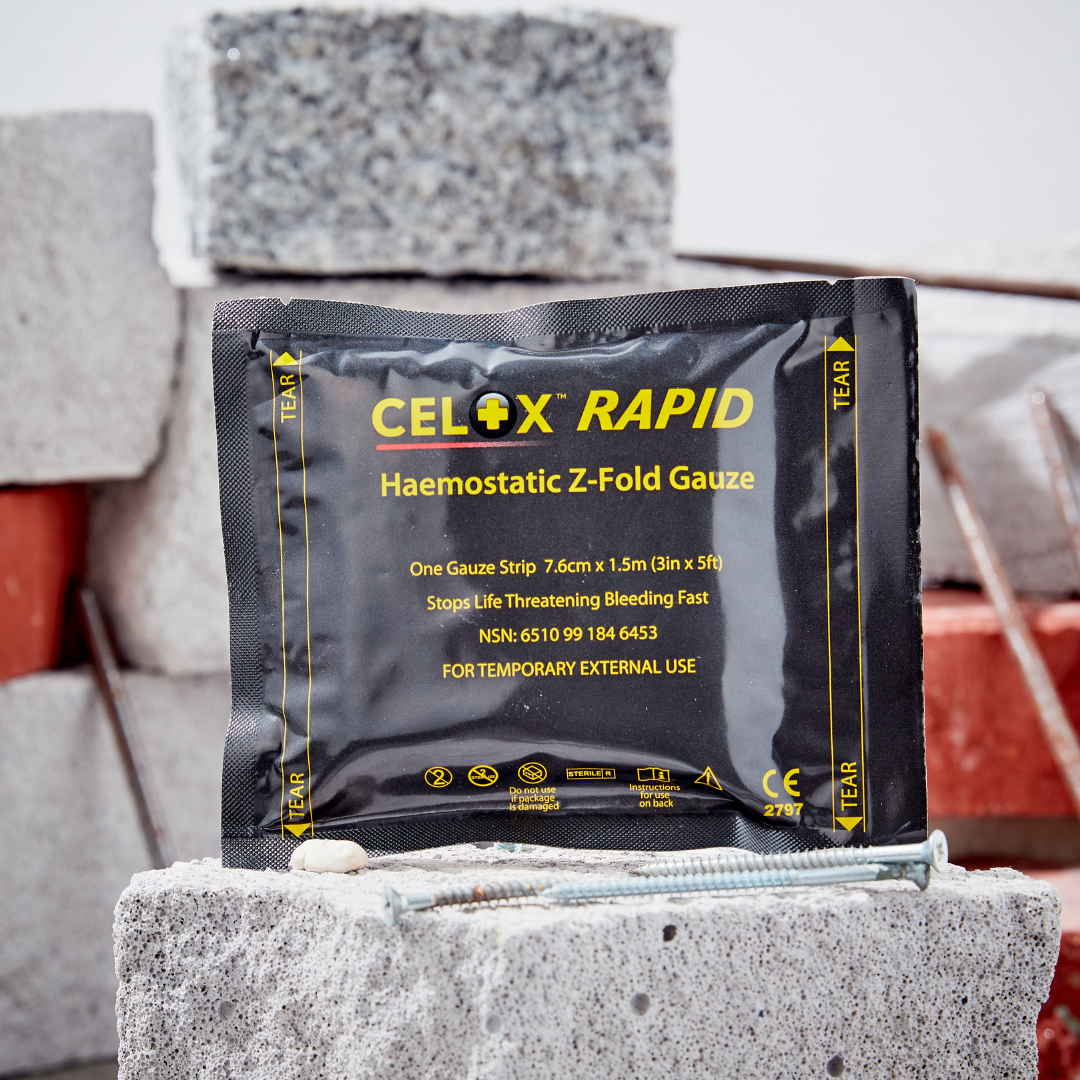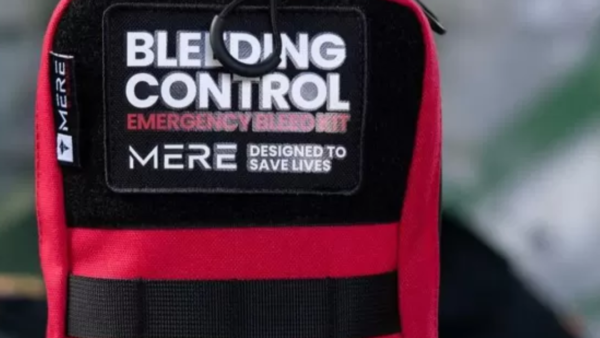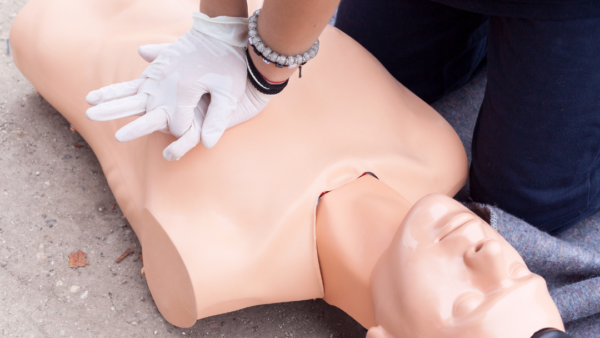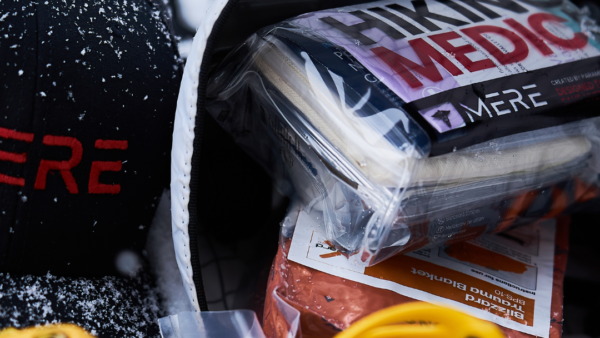Introduction to Haemostatic Gauzes
Haemostatic Gauzes are an essential tool in the medical field, particularly in emergency situations where time is of the essence. These specialised dressings are designed to control bleeding and promote blood clotting, ultimately saving lives. In this ultimate guide, we will explore how they work, their importance in emergency situations, different types available, benefits of using them, proper usage techniques, common misconceptions, their role in medical and military settings, as well as some product recommendations.
How haemostatic gauzes work
These gauzes work by stimulating the body’s natural clotting process to stop bleeding quickly and effectively. These gauzes are typically made from materials such as chitosan or kaolin, which have unique properties that aid in clot formation. When applied to a bleeding wound, haemostatic gauzes initiate a series of chemical reactions that promote the activation of clotting factors and the aggregation of platelets. This process creates a clot, sealing the wound and preventing further blood loss.
One key advantage is their ability to work independently of the body’s natural clotting mechanisms. This is particularly beneficial in situations where the body’s clotting factors may be compromised, such as in patients with certain medical conditions or those on anticoagulant medications. Haemostatic gauzes provide a reliable and rapid solution to control bleeding, allowing medical professionals to focus on other aspects of patient care.
The importance of haemostatic gauzes in emergency situations
In emergency situations, every second counts, and having effective tools to control bleeding can mean the difference between life and death. Haemostatic gauzes play a crucial role in managing severe bleeding, especially in situations where direct pressure or traditional dressings may not be sufficient. Whether it’s a car accident, a gunshot wound, or a deep laceration, these gauzes can quickly and effectively stop bleeding, giving healthcare providers valuable time to stabilise the patient and arrange for further medical interventions.
Moreover, haemostatic gauzes are also vital in situations where access to medical care is limited or delayed, such as during natural disasters or in remote areas. These gauzes can be easily carried in first aid kits or emergency response bags, allowing individuals with minimal medical training to provide immediate and potentially life-saving care. By controlling bleeding and preventing excessive blood loss, these gauzes greatly improve the chances of survival until professional medical assistance can be obtained.
Different Types Available
There are several types of haemostatic gauzes available on the market, each with its unique characteristics and advantages. One common type is the chitosan-based gauze, which is derived from the shells of crustaceans. Chitosan has natural clotting properties and effectively promotes the formation of stable blood clots. Another type is the kaolin-based gauze, which utilises kaolin, a natural mineral, to enhance clotting. Kaolin interacts with clotting factors in the blood, accelerating the clotting process and controlling bleeding.
Other haemostatic gauzes may incorporate additional components such as hemostatic agents, antimicrobial properties, or even a built-in pressure indicator to ensure proper application. It is important to consider the specific needs of the situation when selecting a haemostatic gauze. Factors such as wound size, location, and the severity of bleeding should all be taken into account to ensure the most effective treatment.
Benefits
The use of haemostatic gauzes offers numerous benefits in emergency situations. Firstly, these gauzes provide a rapid and reliable method to control bleeding, reducing the risk of severe blood loss and its associated complications. By stopping bleeding quickly, haemostatic gauzes aid in maintaining the patient’s blood pressure and overall circulation, preventing shock and other potentially life-threatening conditions.
Secondly, haemostatic gauzes are easy to use, even for individuals with limited medical training. Their simple application and intuitive design allow for quick deployment, making them an ideal choice in high-stress situations where time is critical. Additionally, haemostatic gauzes are compact and lightweight, making them easily portable and accessible in various environments.
Furthermore, haemostatic gauzes are versatile and can be used in a wide range of bleeding scenarios, including arterial, venous, and capillary bleeding. This versatility makes them a valuable tool for healthcare providers, first responders, and military personnel, ensuring that they are well-equipped to manage different types of bleeding emergencies effectively.
How to Properly Use Haemostatic Gauzes
Proper usage is crucial to ensure optimal outcomes and minimize complications. Here are some general guidelines for their correct application:
- Assess the situation: Evaluate the severity of the bleeding and identify any potential hazards or additional injuries that may need immediate attention.
- Apply direct pressure: If possible, start by applying direct pressure to the wound using a sterile dressing or gloved hand. This initial step may be sufficient to control bleeding in minor cases.
- Prepare the haemostatic gauze: Open the packaging of the haemostatic gauze, ensuring that it remains sterile. Some gauzes may require activation or moistening with a sterile saline solution.
- Pack the wound: Carefully place the haemostatic gauze directly onto the bleeding wound, ensuring full coverage. If necessary, apply additional gauze layers until bleeding is controlled.
- Maintain pressure: Apply firm pressure to the wound, maintaining direct contact between the gauze and the bleeding site. This pressure facilitates the activation of clotting factors and promotes clot formation.
- Secure the dressing: Use a bandage or adhesive tape to secure the haemostatic gauze in place, ensuring that it remains fixed and does not become dislodged during patient movement.
It is important to note that haemostatic gauzes are not a substitute for professional medical care. Once bleeding is controlled, seek immediate medical attention for further evaluation and treatment.
Common Misconceptions
Despite their proven effectiveness, there are some common misconceptions surrounding haemostatic gauzes. One misconception is that haemostatic gauzes are only suitable for severe, life-threatening bleeding. In reality, these gauzes can be used in various bleeding scenarios, ranging from minor cuts to major arterial bleeding. Their versatility makes them a valuable tool in any situation where bleeding needs to be controlled quickly and effectively.
Another misconception is that haemostatic gauzes are difficult to use and require extensive medical training. While proper training is always beneficial, haemostatic gauzes are designed to be user-friendly, allowing individuals with minimal medical knowledge to apply them effectively. Their intuitive design and clear instructions make them accessible to a wide range of users, including first aid responders, law enforcement personnel, and even bystanders.
Furthermore, some believe that haemostatic gauzes are only suitable for use in medical settings. However, these gauzes have found widespread application in military settings as well. Their compact size, ease of use, and ability to control bleeding quickly make them an invaluable asset for military personnel in combat situations or during field operations where immediate medical assistance may not be readily available.
Haemostatic Gauzes in Medical and Military Settings
Haemostatic gauzes have become an integral part of medical and military protocols, thanks to their effectiveness in controlling bleeding. In medical settings, these gauzes are commonly used in emergency departments, trauma centres, and surgical suites. They are particularly useful in situations where surgical interventions may be delayed, providing a temporary solution to control bleeding until definitive treatment can be performed.
In military settings, haemostatic gauzes have revolutionised the way battlefield injuries are managed. The ability to quickly stop bleeding and maintain haemostasis is vital in combat situations, where prompt medical evacuation may not be possible. By equipping military personnel with haemostatic gauzes, the chances of survival for injured soldiers have significantly increased. These gauzes have become a critical component of every soldier’s individual first aid kit, ensuring that they have access to life-saving interventions in the field.
The Significance of Haemostatic Gauzes in Saving Lives
In conclusion, haemostatic gauzes are an indispensable tool in emergency situations, offering a rapid and effective method to control bleeding and save lives. Their ability to promote clot formation independently of the body’s natural processes makes them a valuable asset in various medical and military settings. By understanding how haemostatic gauzes work, their proper usage techniques, and debunking common misconceptions, healthcare providers, first aid responders, and military personnel can utilise these gauzes to their full potential, ensuring the best possible outcomes for patients in critical situations.
Remember, when it comes to emergency situations, every second counts. Having haemostatic gauzes readily available and knowing how to use them can make a significant difference in saving lives. Don’t wait until it’s too late – equip yourself with the knowledge and tools necessary to respond effectively in bleeding emergencies.






